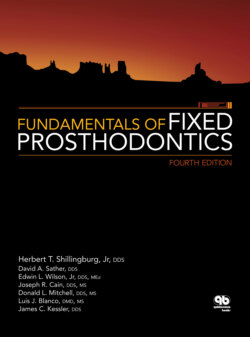Читать книгу Fundamentals of Fixed Prosthodontics - James C. Kessler - Страница 89
Simple amalgam
ОглавлениеThe simple amalgam, without pins or other means of auxiliary retention, for decades has been the standard one- to three-surface restoration for minor- to moderate-sized lesions in esthetically noncritical areas (Fig 6-8). It has received a good amount of negative attention in the media, and some segments of the profession use this as an excuse to replace otherwise acceptable amalgam restorations with composite resin. The American Dental Association’s Statement on Dental Amalgam states that amalgam is a valuable, viable, and safe choice for dental patients.5 A European Commission’s Scientific Committee also concluded that amalgams are effective and safe.6 They further state that there is no clinical justification for removing satisfactory amalgams except for allergic reactions. Nor is the mere presence of a defective margin alone enough to require replacement.7 Approximately 71 million or more simple amalgam restorations are placed annually.8 They are best used where more than half of the coronal dentin is intact.
Fig 6-2 Glass ionomer can be used to restore gingival abrasion or erosion.
Fig 6-3 Tunnel preparation and glass ionomer can be used to restore an incipient lesion on the proximal surface of a posterior tooth.
Fig 6-4 Root caries restored with glass ionomer.
Fig 6-5 Rampant caries can be brought under control with glass ionomer.
Tooth preparation size for incipient lesions has diminished in recent years as the popularity of the concept of “extension for prevention” has waned. This move toward less destructive preparations has been augmented by the development of smaller instruments and stronger amalgams. Nonetheless, even a minimal preparation for an amalgam restoration significantly weakens the structural integrity of the tooth.9
